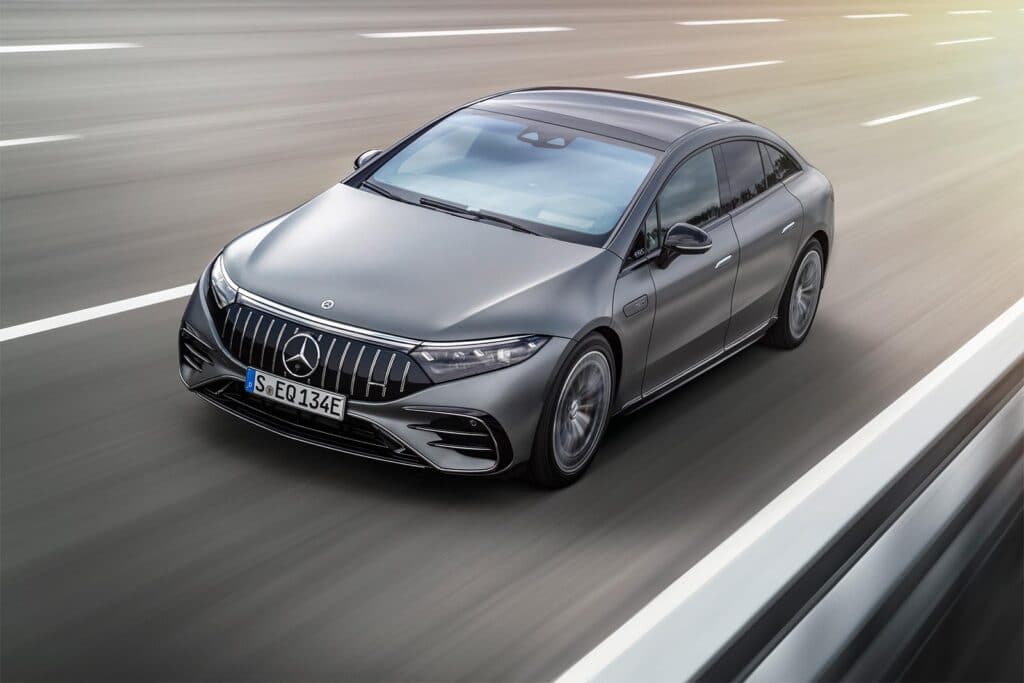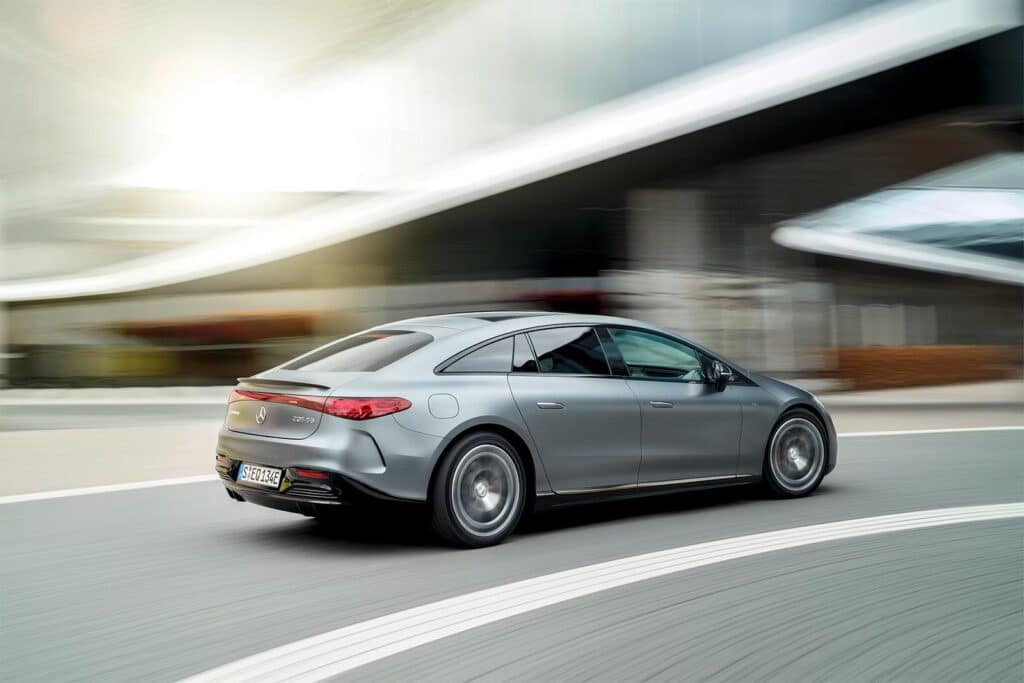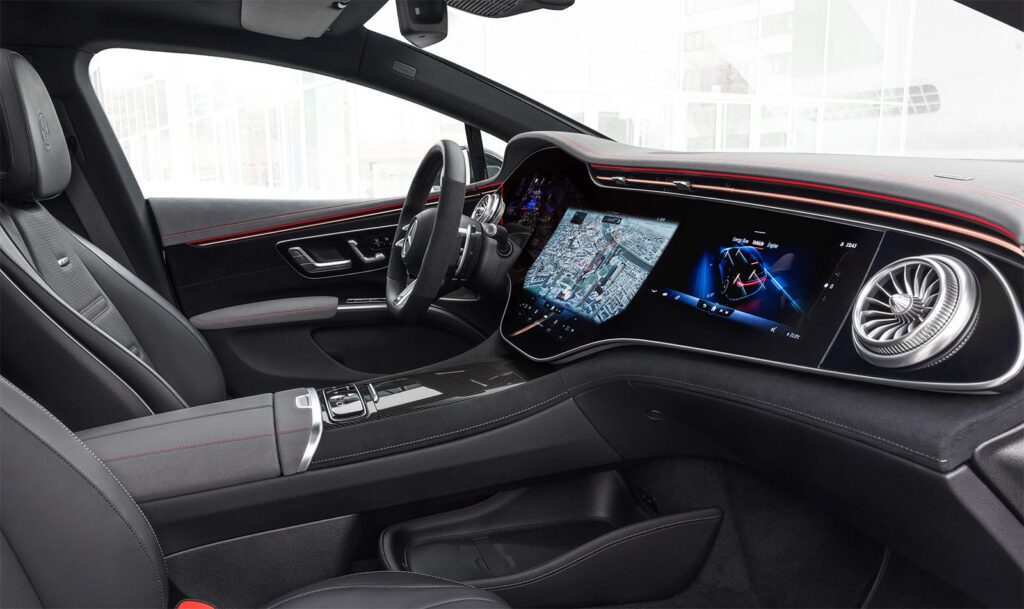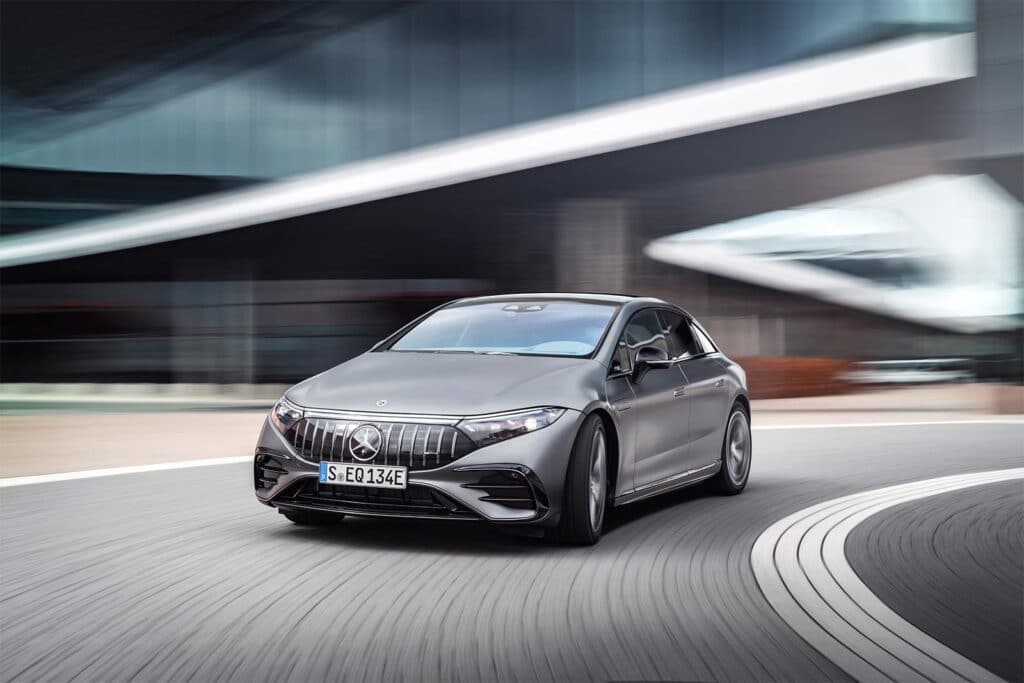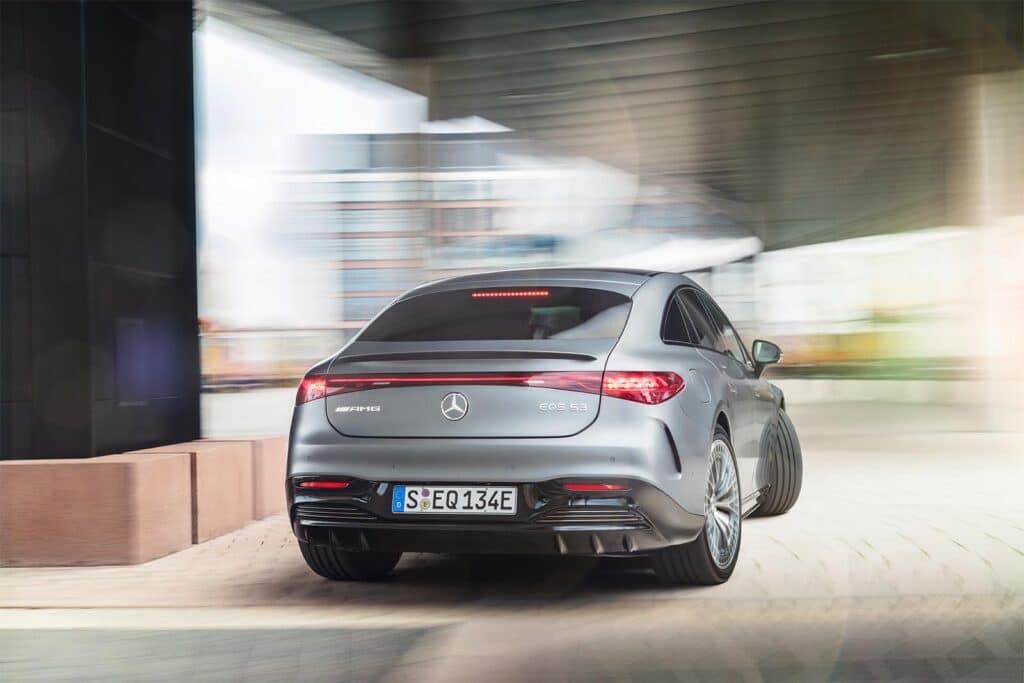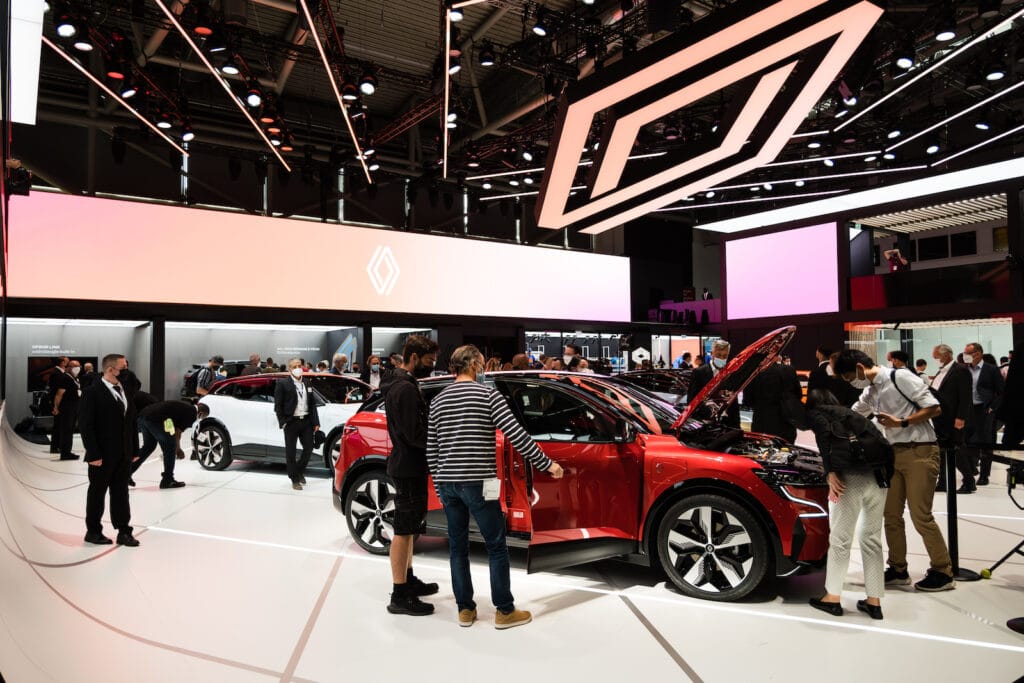
There was plenty of buzz at the first-ever Munich Motor Show about all the battery-electric vehicles making their debut — but a look at the long list of debuts reveals that the show was also notable for the number of concept vehicles on display.
And where many of the show cars we’ve seen in recent years were simply thinly disguised variants of upcoming production vehicles, some automakers brought more classic, fantasy-in-chrome concepts to Munich.
These included the updated version of the Mercedes-Benz Vision AVTR with technology allowing the driver to operate vehicle functions simply by thought.
Automakers provide a glimpse at the future
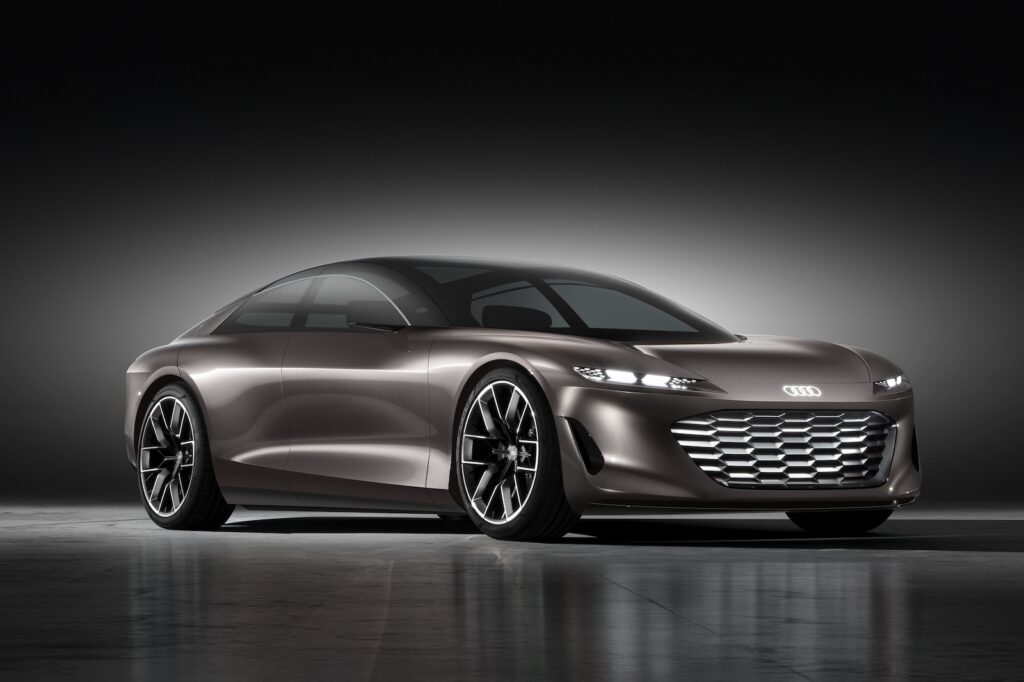
Here’s a look at some of the most notable concept vehicles to roll into the 2021 Munich Motor Show.
Audi Grandsphere. The second of three futuristic concepts Audi is rolling out, the all-electric, fully autonomous Audi Grandsphere can be seen as a four-wheeled luxury jet — or, a “first class lounge” on wheels. Part of a long history of fantasy-in-chrome show cars, Audi contends it will influence future production models. Grandsphere is less radical a design departure than the earlier Skysphere which could stretch its length by nearly a foot. Grandsphere’s technology falls roughly into three distinct categories.
To start with, it uses an all-electric drivetrain pairing twin motors — one on each axle — to produce 711 horsepower and 686 pound-feet of torque. Grandsphere, meanwhile, features Level 4 autonomy where vehicle controls retract and occupants can shift seating to face one another. Then, the cabin becomes a showcase of smart functions. Numerous surfaces, double as video displays. And while it’s not quite up to Star Trek tech, there’s even what Audi calls a “holoride” virtual reality system.
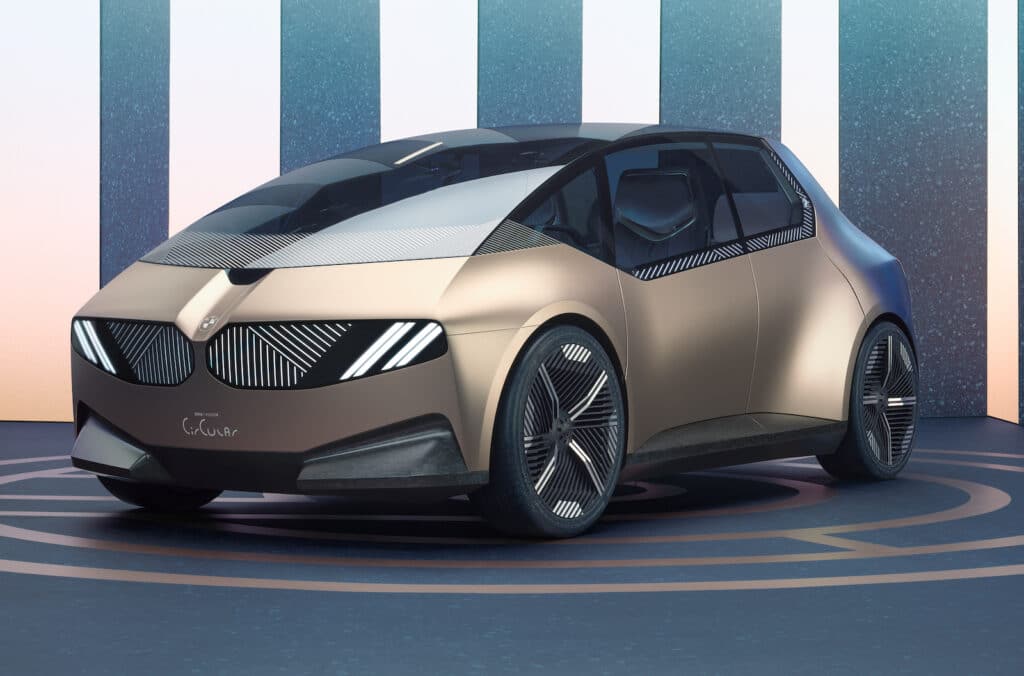
BMW i Vision Circular. The BMW show “symbolizes our ambition to be a pioneering force in the development of a circular economy,” said BMW Chairman Oliver Zipse.” The prototype is more than just a design or technology exercise. It is intended to promote an entirely new way to design, build and, eventually, recycle vehicles.
The idea is to create a circular automotive economy reliant on clean energy and reusable materials, such as the concept’s flax-based plastics and synthetic rubber. Then, when it’s time to scrap the vehicle, all its parts and components can be fully recycled. The design of the i Vision Circular moves beyond the new iX, inside and out. The show car makes use of breakthrough technologies, such as its next-gen solid-state batteries, and display screen technology directly incorporated into the windshield.
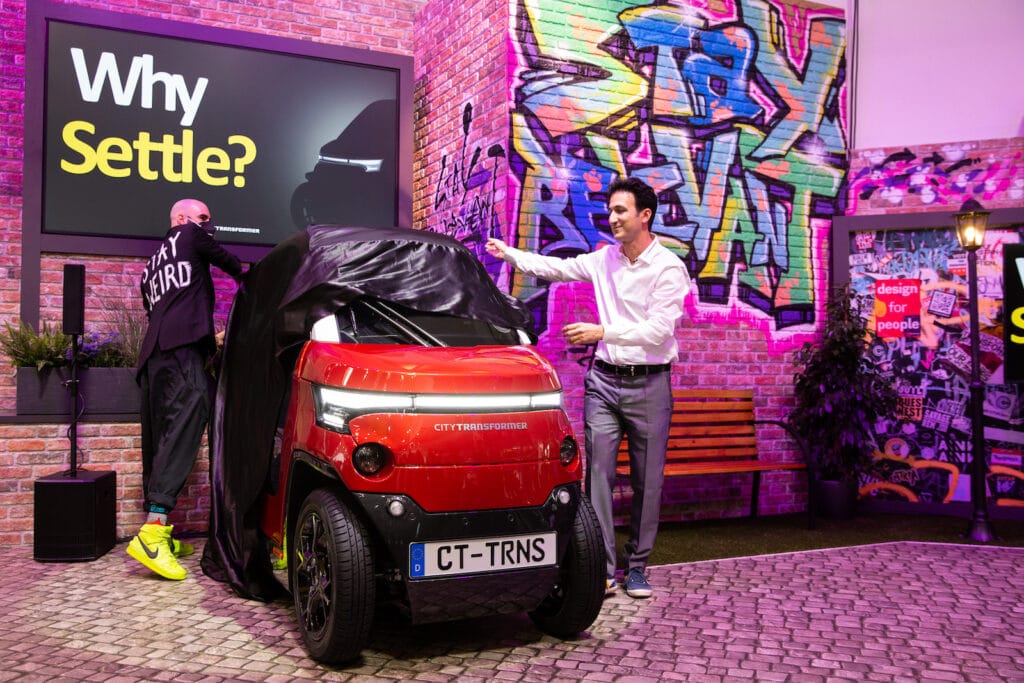
City Transformer. Two trends are reshaping urban highways: the need to cut emissions, and the challenge of coping with ever-increasing highway congestion. Oddly, two brands known for their pint-sized products, Smart and Mini, came to Munich with concepts much larger than what they’re known for.
Israeli startup City Transformer showed up with an EV concept that could be perfect for jaunting around town. The CT-1 measures just 92 inches in length, more than a foot shorter than the Smart ForTwo. It’s 1,000 mm, or 39 inches, wide under normal driving conditions, so tiny overall that four can fit in a typical parking space. But it can expand to a width of 1,400 mm, or 55 inches, in Performance Mode. The concept has a rated top speed of around 56 mph and can get anywhere from 75 to 112 miles per charge. City Transformer hopes to go public to raise cash and put the car into production.
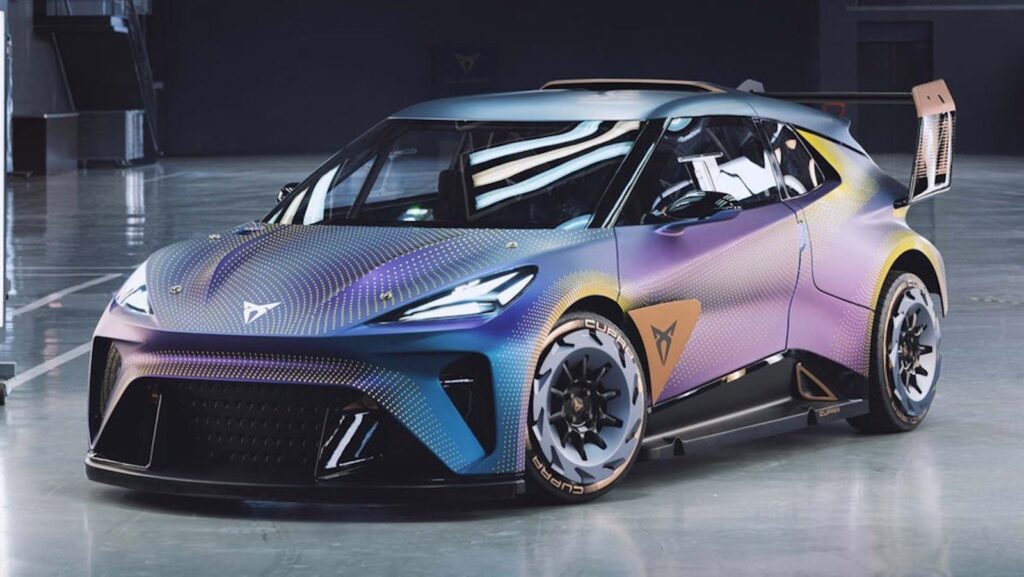
Cupra UrbanRebel. While EVs have great green credentials, electric motors also can be incredibly quick due to the instant torque they develop. Cupra, the newest brand of the Volkswagen Group, shows how you could take advantage of that with an all-electric hot hatch. Looking like it rolled out of a videogame, the UrbanRebel measures a mere 160 inches in length, or a bit shorter than a Chevrolet Bolt. And it draws power from a single motor rated at 335 horsepower.
It also features a Boost mode that briefly bumps power up to 429 hp. That’s enough to get you from 0-100 knh, or 0-62 mph, in 3.2 seconds. The Cupra shares the same skateboard-like platform with an array of Volkswagen Group products, including the ID.Life concept also debuting in Munich. That would make it easier to put into production — something that this SEAT sub-brand apparently hopes to do by 2025. No plans for the U.S., however.
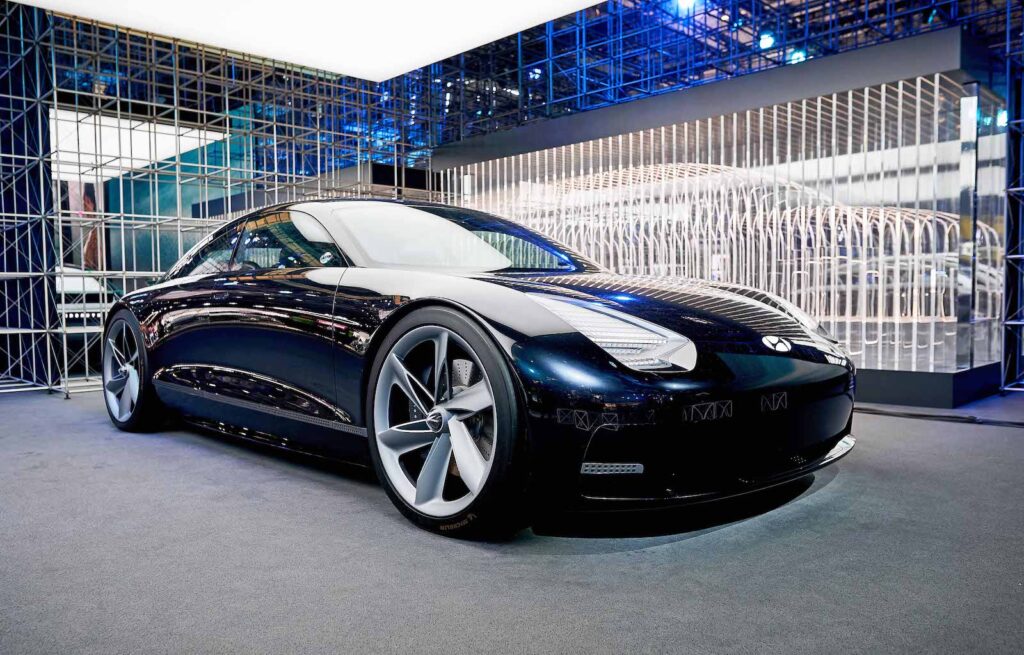
Hyundai Ioniq 6 Concept. Hyundai talks a lot about sustainability these days and its primary offering in Munich was a thinly disguised “concept” version of its next battery-electric vehicle, the Ioniq 6. The production model has been delayed, Hyundai seeking to increase its range, among other things. But the show car provides a good indication of what it will look like.
Where the brand’s first BEV, the Ioniq 5, retains the design theme of current, gas models, the Ioniq 6 adopts an entirely new take on Hyundau’s ”Sensuous Sportiness” styling language. It’s almost sports car-like on the outside — much like the earlier Prophecy concept. Both Ioniq models share the same E-GMP skateboard-style platform and an electric architecture that can operate at 400 or 800 volts — the latter allowing superfast recharging. After months of delays, expect the Hyundai Ioniq 6 to debut in production form next year.
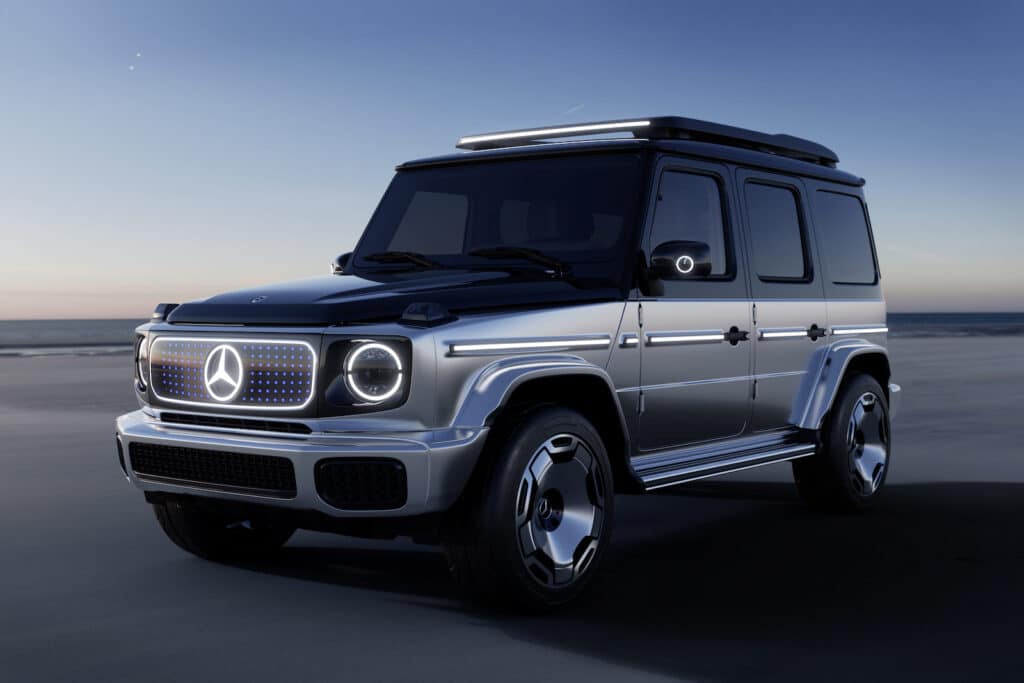
Mercedes-Benz EQG. This “near-production study” reimagines what a Gelandewagen — or G-Class, if you prefer — will be like in the new era of electrification. As with other battery-powered models, the concept SUV has clearly spent time in the wind tunnel, aerodynamics critical to maximizing range and performance. But it’s gotten a far less radical makeover than we’ve seen in the transition from Mercedes S-Class to EQS. The EQG’s overall shape remains what Mercedes describes as “an uncompromising off-roader.”
The show SUV gets an independent suspension on the front axle, but retains a rigid torsion beam axle in back. And there are four electric motors here, twice as many as on the EQS 4Matic and AMG EQS. By positioning individual motors near each individual wheel, the automaker explains, it can offer “unique driving characteristics both on- and off-road.” No word on when a production Mercedes EQG will appear, but it’s likely to be within the next few years.
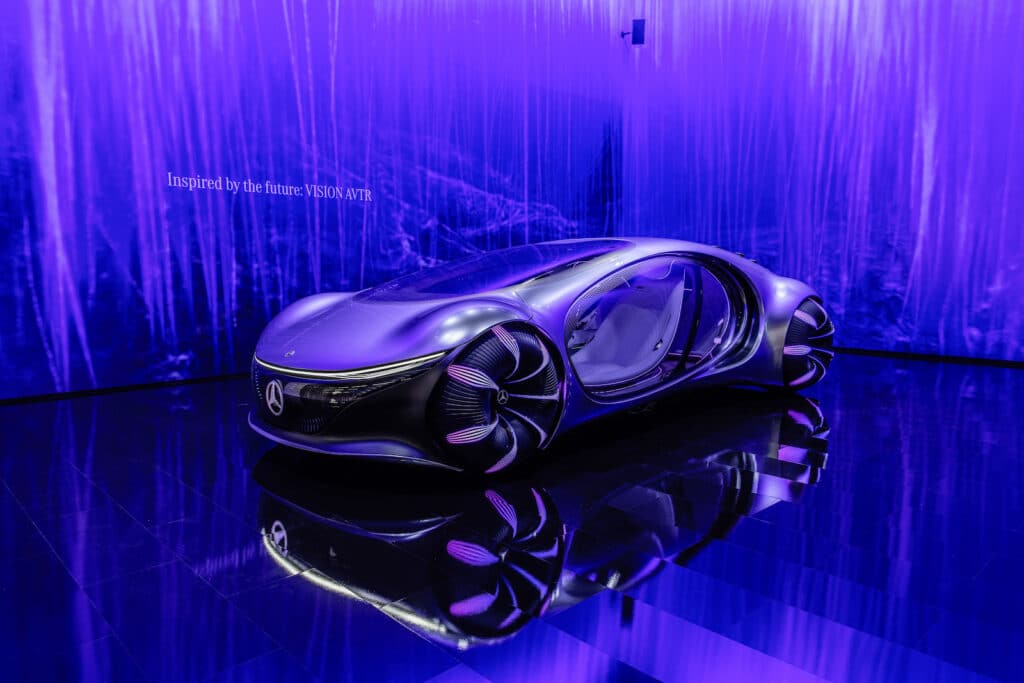
Mercedes-Benz Vision AVTR. Pronounced “Avatar,” the concept initially was developed in cooperation with James Cameron, director of the smash hit movie by that name. It first debuted at the 2020 Consumer Electronics Show in Las Vegas. Now, it has made the trek across the Atlantic and gotten some new, cutting-edge technology along the way.
Visitors to the Munich show will get the chance to try out the brain-computer interface by climbing into a mockup of the Vision AVTR’s driver’s seat. Using a band with electrical sensors at the back of the head, the BCI system will detect “neuronal activity,” using it to operate a variety of different vehicle functions. There’s also a glowing central controller that can read your pulse to operate many of the prototype’s functions. And AVTR also features both virtual and augmented reality technology
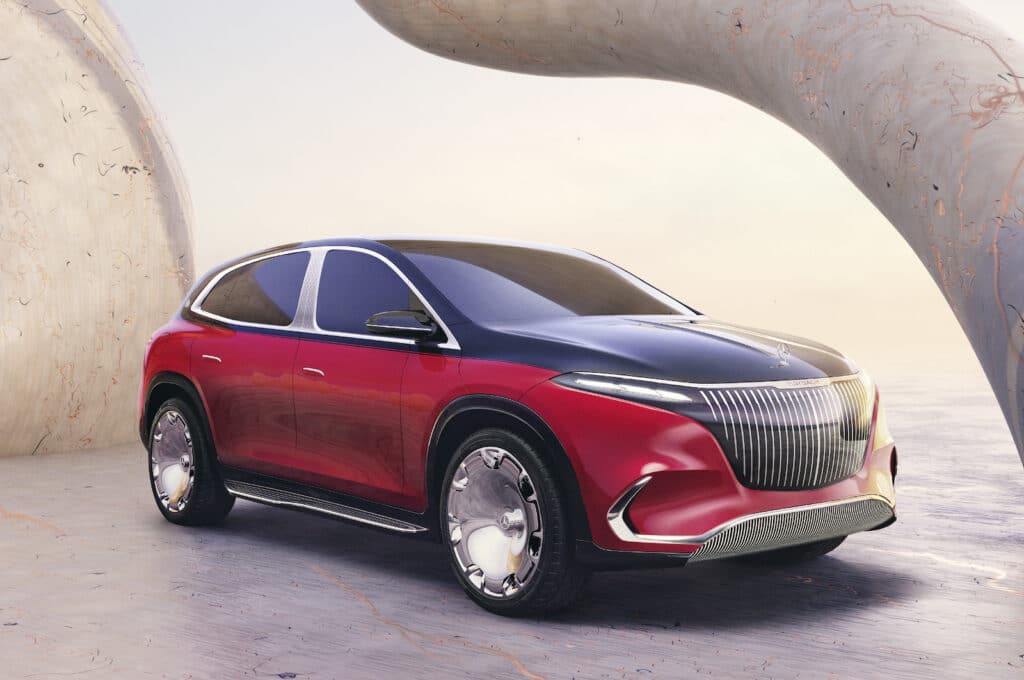
Mercedes-Maybach EQS. Based on the same EVA platform as the comparatively mainstream Mercedes EQS sedan, this “near-production one-off” takes things to new levels. That means an even more roomy and luxurious cabin, new features such as a floating rear center console and traditional Maybach details, including an “elaborate” two-tone paint finish. The interior is intended to create the feel of a high-end lounge, especially with executive-style seats and the optional Chauffeur Package.
The Maybach Concept adds unique features and details, including new door panels and armrests, trim elements in white piano lacquer and an interior finished in deep-sea blue. Mercedes didn’t offer drivetrain details but the concept likely will share what’s in the standard issue EQS, perhaps with a performance upgrade in line with the 751-hp AMG EQS also debuting in Munich.
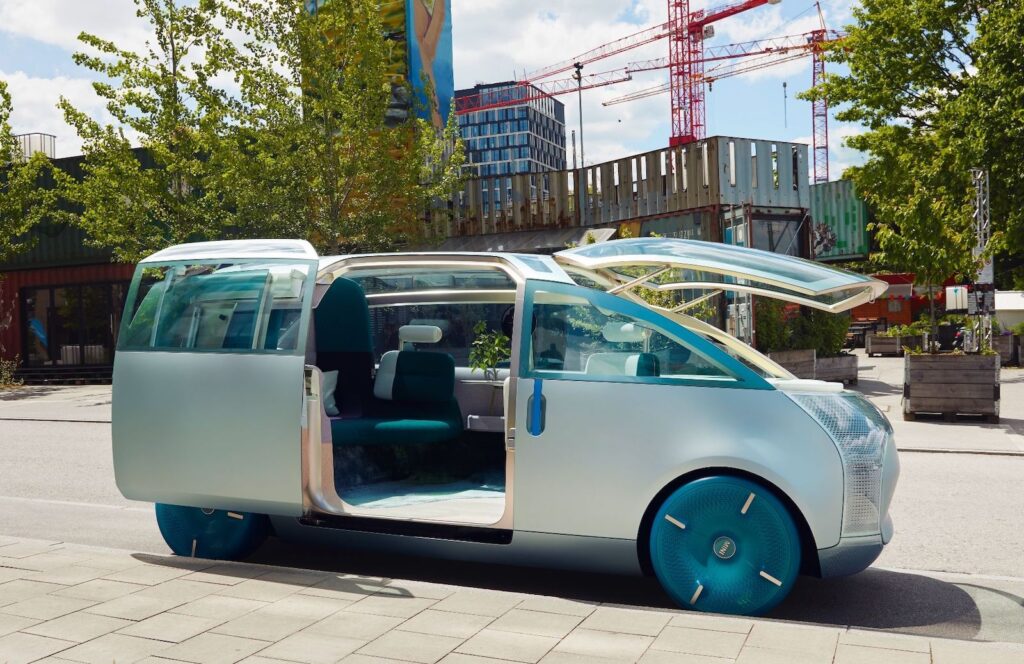
Mini Vision Urbanaut. If you’re getting a sense of déjà vu, that’s no surprise. The Mini Urbanaut originally appeared in 2020, but BMW’s British brand has made a number of changes to this microvan-like concept that suggest a production version is in the works. Mini insists you’ll immediately recognize its brand cues, but the styling is unlike any Mini we’ve seen before — both outside and in.
There’s certainly a lot more room inside where it adopts a sort of lounge-on-wheels appearance offering far more space than any prior Mini product. If there’s one thing that clearly does carry over it’s the broad sense of quirkiness that has traditionally defined the brand. In concept form, the Urbanaut is envisioned as a fully autonomous vehicle, allowing passengers to use the interior space as a gathering place. If brought to market in the near-term, expect to see the Mini Urbanaut still require a driver.
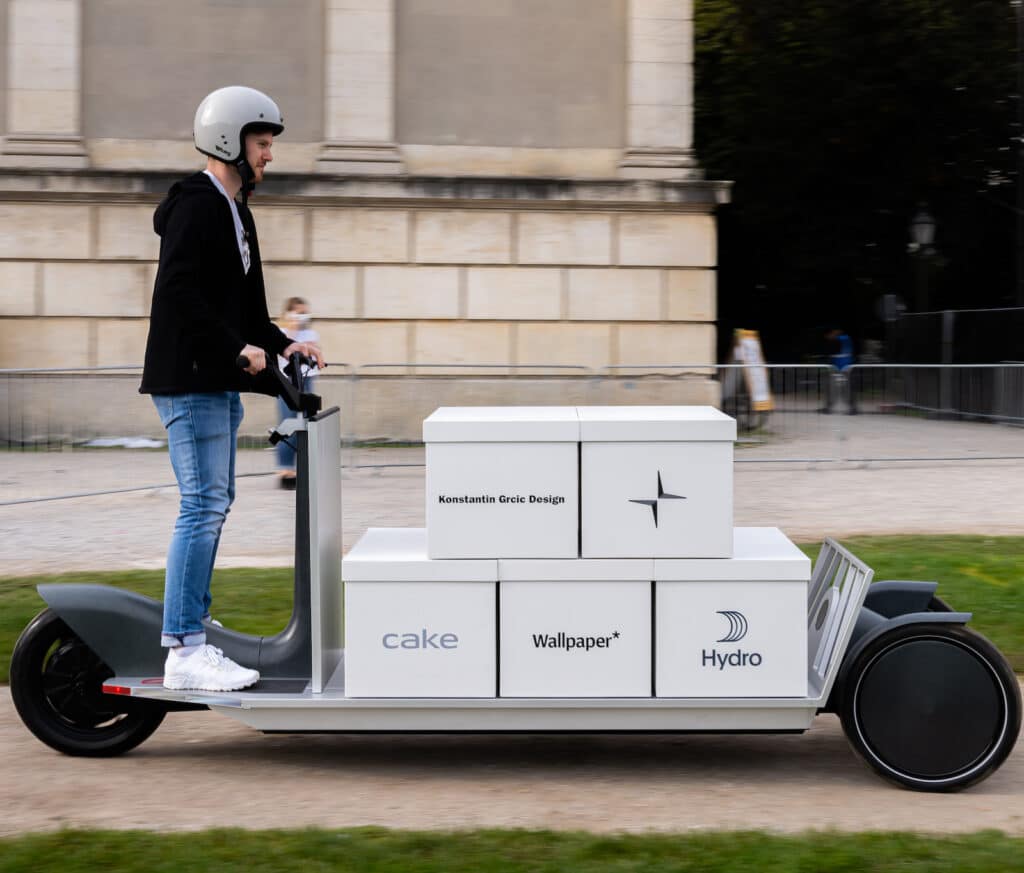
Polestar Re:Move. With this concept, Volvo’s EV spinoff focuses on a very different sort of mobility issue, the “last mile” challenge. The Polestar Re:Move is designed to replace delivery vans to improve traffic flow in traffic-clogged urban environments. The prototype uses a 2.2 kilowatt-hour lithium-ion battery. It measures 29.5 inches wide, narrow enough to fit in bicycle lanes, yet can carry as much as 397 pounds. The frame is built using flax-based composites, rather than plastic.
Its low-carbon aluminum chassis has an electric tilt mechanism, allowing the vehicle to “lean in” to turns, allowing for a 23-foot turning radius. You likely won’t take it for a joy ride, however, as top speed is a fraction above 15 mph. While Polestar isn’t talking production plans there’s clearly a need for these delivery van alternatives and a number of similar concepts are popping up, including GM’s new, droid-like EP1.
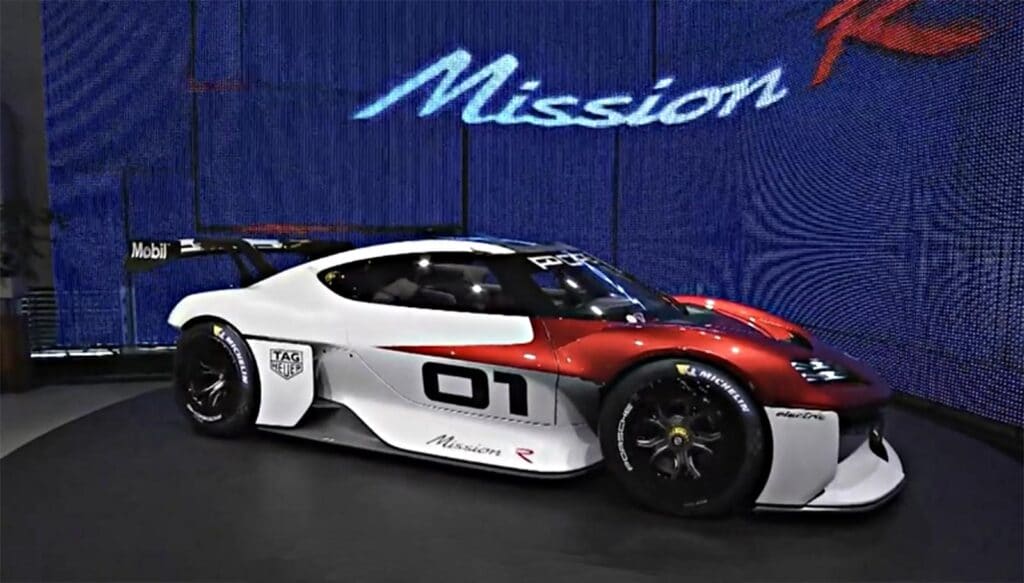
Porsche Mission R. This concept will influence both Porsche’s future racers and production vehicles. Porsche has long been a force to be reckoned with in racing. And it has begun getting its wheels wet in electric motorsports as part of the Formula E series. But the unveiling of the Mission R concept was clearly designed to signal that an even broader effort is in development.
The sleek Mission R concept picks up on classic Porsche design cues, with clear links to the automaker’s first production battery-electric vehicle, the Taycan. Its twin motors are capable of making “over 1,000 horsepower” in qualifying mode and running at speeds up to 300 kmh — or 186 mph for up to 30 minutes on a charge. Inside, it’s a decidedly driver-oriented layout and one of the more innovative features is the use of a video screen layout mounted directly in the center of the steering wheel. Expect to see key features from the Mission R concept to reappear on track and production models, said Porsche CEO Oliver Blume.
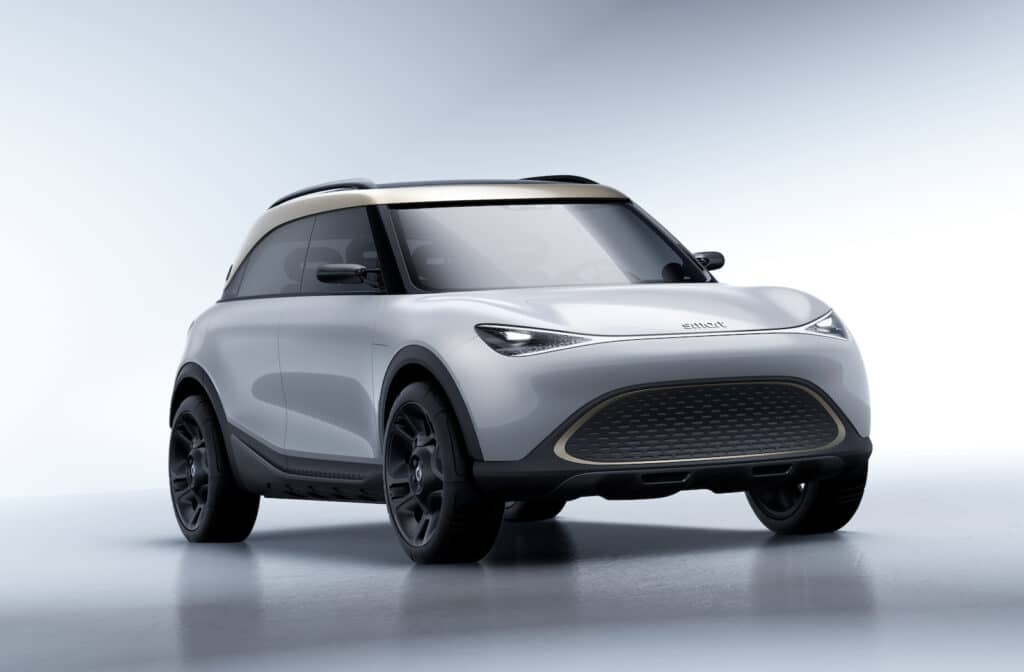
Smart Concept #1. The Mercedes spinoff has been going through a number of changes, starting with its transformation into an electric-only brand. Smart apparently has several show cars in the works, starting with the Concept #1 debuting in Munich. It’s bigger than the products the brand has been known far — and more luxurious.
The semi-matte white exterior is contrasted by an interior lavished with rose gold. The foundation is the same as the skateboard-like platform underpinning the new Mercedes EQA battery-electric vehicle — which, Smart promises, will deliver much more “dynamic handling” than the brand has been known for. Measuring 169 inches, nose-to-tail, the prototype is almost as big as a Mini Countryman. Expect to see a final version of this concept go into production by 2023. Developed as a joint venture with Geely, it will be offered in China — where it will be built — as well as Europe, but almost certainly not the U.S., a market Smart abandoned in 2019.
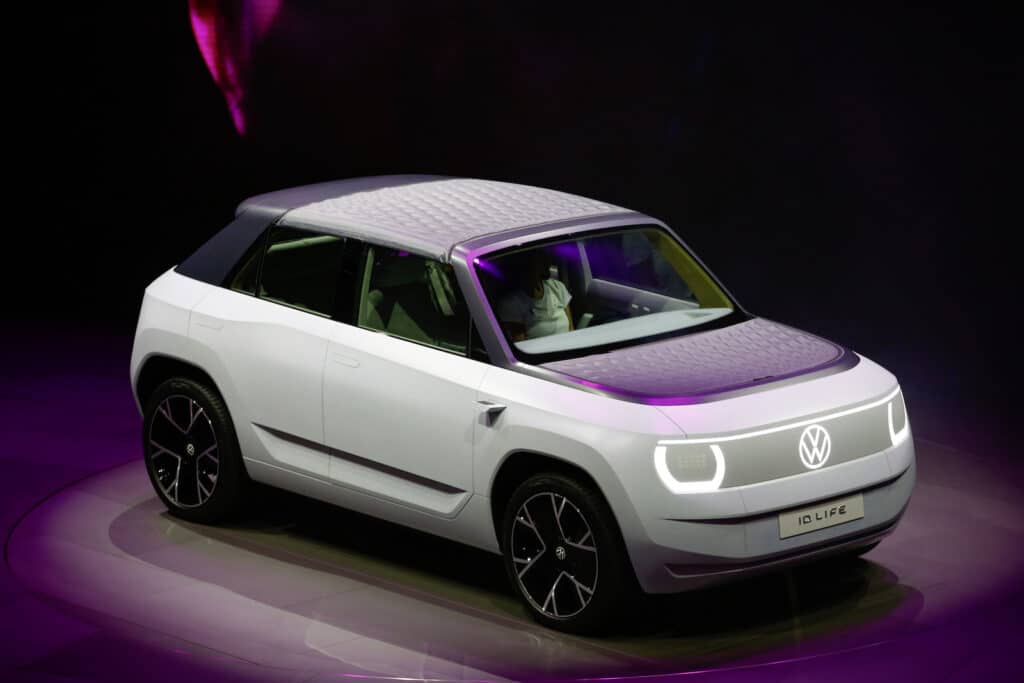
Volkswagen ID.Life. This five-door hatchback forecasts a new 2025 Volkswagen ID electric crossover that will fill the gap between the ID.3 hatchback and ID.4 compact crossover in VW’s line-up. The ID.Life rides on the automaker’s flexible MEB architecture, a skateboard-like platform with batteries and other drivetrain components below the load floor.
The new front-wheel-drive crossover is powered by a 57kWh battery pack powering a 231-horsepower electric motor. Range is an estimated 249-miles. The battery pack can recapture 101 miles in 10 minutes using a DC fast charger. ID.Life runs 0-62 mph in 6.9 seconds and boasts a 112 mph top speed. Being a concept, you’d expect some wild ideas and ID.Life is no exception. There are no mirrors; they’ve been replaced by cameras. The yoke-style steering wheel houses the vehicle’s controls, including the vehicle’s projector screen, which rises from the dashboard when the vehicle is parked. It also hosts the vehicle’s built-in gaming console.
(Contributing Editor Larry Printz assisted in this story.)
